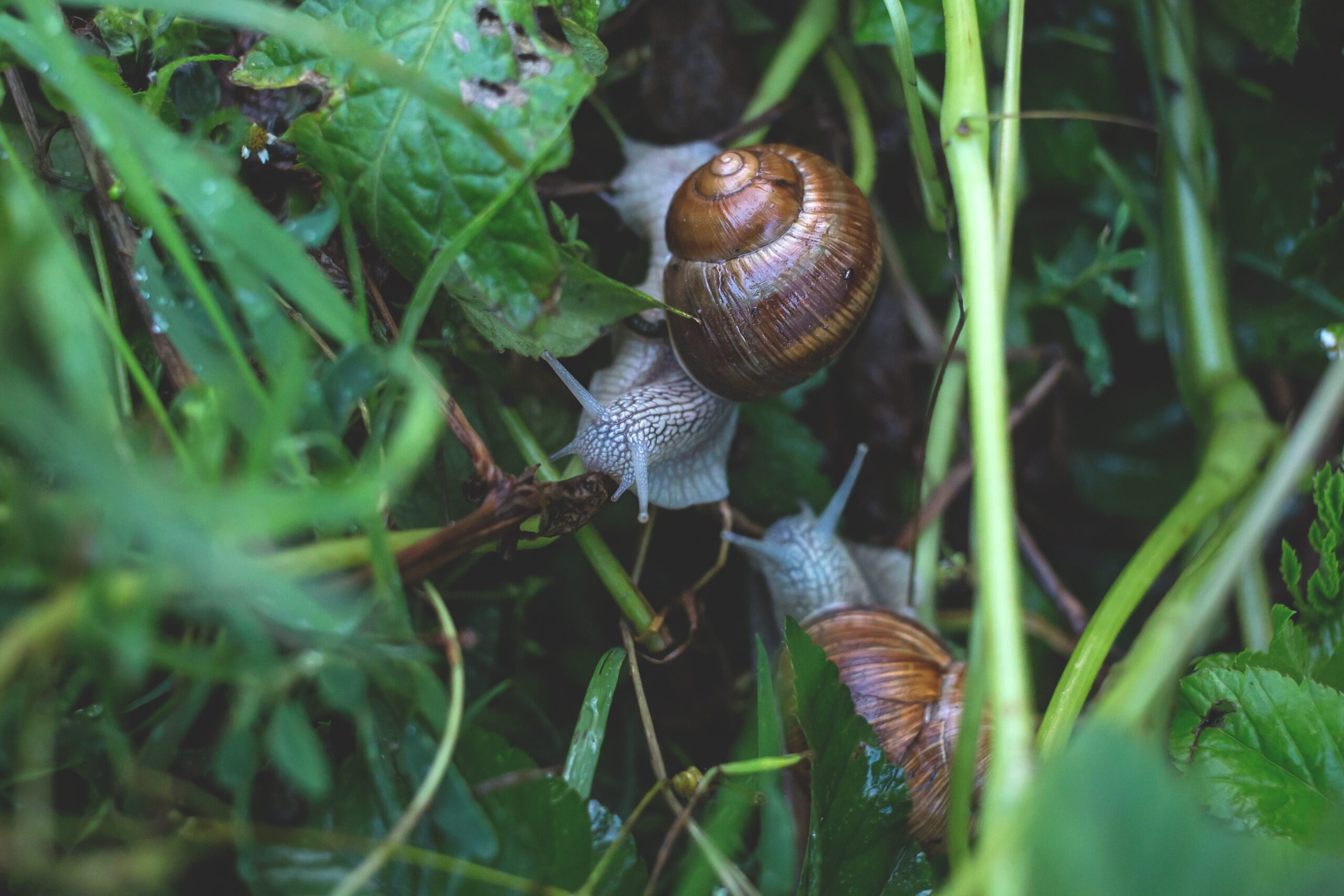One of the most crucial determinants of the success of a heliciculture project is the quality of housing. Properly constructed snaileries reduce the risk of disease, protect snails against predators, prevent snails from escaping and optimally maintain the natural or artificial climate during production. Hutches are another type of pen used to house snails.
They are square or rectangular, single or multi-chamber wooden boxes with lids, placed on wooden or metallic stilts above the ground at a suitable height for easy handling. The stilts should be fitted with plastic or metal conical protectors or aprons to prevent vermin from crawling or climbing up them to attack the snails in the boxes. Old tins or plastic bottles can be used as protectors. In the middle of the lid is an opening covered with wire netting and nylon mesh. The lid should be fitted with a padlock to discourage pilfering. In the floor of the box are a few holes through which excess water can drain out.
The boxes are filled with sieved black soil to a depth of 18 to 25 cm, and should be well protected from scorching sun or torrential rain.
Hutch boxes are quite useful for semi-intensive snail breeding systems. Their structure makes it easy for eggs and young snails to be monitored, which make them good for use as hatcheries and nursery pens. Mature snails in larger snaileries could be transferred to hutches when they start making holes to lay eggs, and breeding snails should be moved to their own pens after the hatchlings begin to emerge. Hygiene is maintained by regularly changing the soil in the hutch to avoid the accumulation of droppings. It is recommended that the soil is changed every three months. The advantages of hutches are that they are mobile.
They can be moved around conveniently to ensure good supervision and security. They are built at a comfortable working height, permitting efficient and effective feeding and handling of the snails. Disadvantages are their cost of construction and their limited size, which restricts the number of snails that can be kept in them (some 30 hatchlings/ juveniles, or about three mature snails in a box). Trench pens are also used to house snails.
Trench pens are adjoining snail pens of 0,6 × 0,6 m to 1 × 1 m, either dug into the ground, which must be very well-drained, or raised 40 to 50 cm above the ground. Outside walls and inner partitions consist of concrete blocks or mudbricks in either case. Soil to a depth of 10 to 15 cm is filled into the pens, then they are covered with wooden or steel frame lids with chicken wire plus nylon mesh, and fitted with padlocks for safety purposes. As snails are sensitive to adverse climatic conditions, the pens must be free from the effects of adverse heat, wind and rain. Trench pens are commonly used for semi-intensive to intensive snail raising ventures.
They can be used for hatcheries, nurseries or fattening pens, with the number of snails adapted to their size in each case. The main advantage of a trench pen system, whether sunken or raised, is its flexibility. Snails can be moved around easily according to their size and phase in the growing cycle. Their structural design allows for the easy location, feeding, handling, selection and final sale or consumption of snails. Their main disadvantages are their construction costs, especially when it comes to raised pens where a farmer does not need to stoop or kneel down to take care of the snails.
Mini-paddock pens are the other common type of pens. These are usually small square or rectangular pens in a larger fenced area. Construction materials employed for their construction are bamboo/wood and nylon mesh. The walls surrounding the pens should be at least 50 cm high, and they should be dug at least 20 cm into the ground. Wooden frames are attached to the top of the walls (extended inwards) and covered with the mesh to prevent snails from escaping.
It is of paramount importance that plants (sweet potato, fluted pumpkin, and leafy vegetables) providing shelter and/or food are planted in the pens before snails are released into them. These plants may need to be replanted as they get fewer or lose their functional effectiveness. Mini-paddock pens can be erected high above ground level with completely enclosed frames, and can have roof.
Mini-paddock pens are best for fattening, where snails that are no longer needed for breeding are allowed to put on weight before being collected for consumption or sale. Not all food given to them will be consumed thus it is important to ensure that uneaten food is regularly removed.
Mini-paddock pens are advantageous as their structure mimics snails natural habitat and the dimensions of the pen still permit close supervision. Their disadvantage is that snails are not always protected from predators, in the case of open and unroofed pens and if the pens is designed closed and roofed, its costlier.
References
Rygało-Galewska, A., Zglińska, K., Niemiec, T. (2022) Edible Snail Production in Europe. Available at: https://www.mdpi.com/2076-2615/12/20/2732
Helicicultural Entrepreneurship. Available at: https://www.turkeytrainings.com/heliciculture
Snail Farming Startup Guide. Available at: https://www.agri4africa.com/snail-farming-startup-guide/
A Practical Approach To Backyard Snail Farming. (1998) Available at: https://www.ajol.info/index.php/njap/article/view/124545
Akharume, C. O., Alao, B. O., Eyinade, G. A. (2019) Costs and returns analysis of smallholder snail production in south western Nigeria. Available at: https://serialsjournals.com/abstract/21186_ chap-2_celestine_ohi_akharumechapter_2.pdf
Ngenwi, A. A., Mafeni, J. M., Etchu, K. A., Oben, F. T. (2010) Characteristics of snail farmers and constraints to increased production in West and Central Africa . Available at: https://idl-bnc-idrc.dspacedirect.org/bitstream/handle/10625/48747/IDL-48747.pdf









